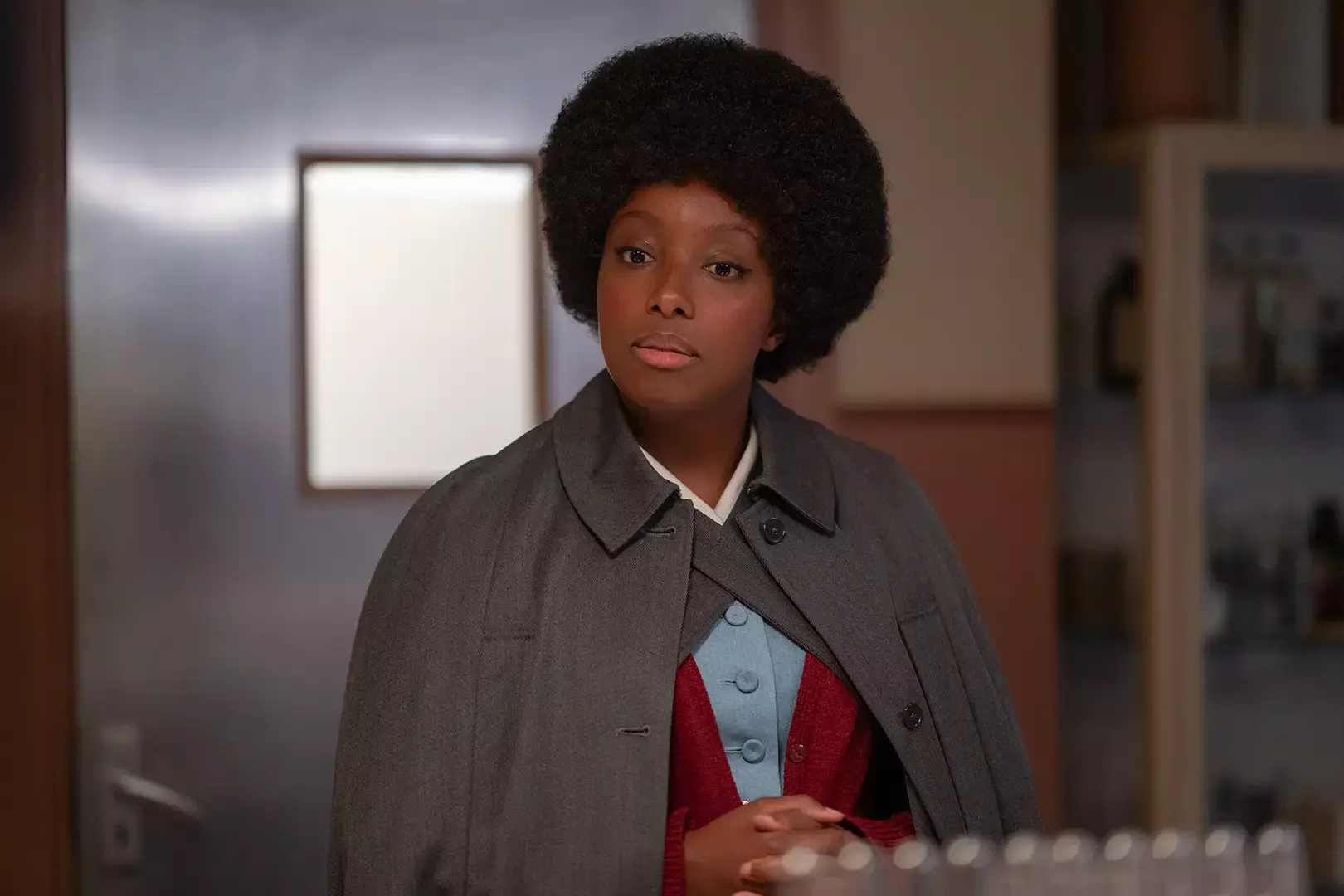I loved the beginning of the episode where we see the “newly minted” midwifery graduates celebrating with the gift of their “official” maroon midwifery sweaters. Although we followed the student midwives over the past few episodes and got to see a glimpse of their daily lives, it wasn’t a fully realistic view of the literal blood, sweat, and tears required to become a midwife. Learning you have passed your midwifery certification exam and are a “real” midwife – it’s a feeling like no other. Thank you to the show’s writers for taking me back to that moment!
Like so many storylines in the series, this episode’s depiction of a young woman pregnant because of a stepfather’s molestation is sadly an all too familiar one. When she attempted to ask a question to the midwives during their teaching session, did you notice her chloasma? Maybe you caught the comment between Phyllis and Rosalind about it. Chloasma or “mask of pregnancy” is a hyperpigmentation of the skin around the eyes and across the cheeks that isn’t related only to pregnancy. It is a result of fluctuating hormones and can also be seen in women who use hormonal birth control. Often, it becomes exacerbated by sun exposure.
Also in this episode, Joyce Highland (played by Renee Bailey) readily manages an emergency during the home birth of a woman experiencing an abruption of her placenta. This occurs when the placenta prematurely shears partially or completely off the uterine wall. Now, I realize that ALL viewers who believe that birth should ONLY ever occur in a hospital found vindication in that one moment and uttered it to all within hearing distance, “THAT is why women should give birth in hospitals; you SEE what can happen?” Let’s look at the facts of a home birth, folks…
Approximately 1.41% of U.S. births occur at home. Before you think that represents only a mere handful of births, consider that there are approximately 3,700,000 births annually in the US; that amounts to approximately 51,800 babies born at home. The evidence and data we have show that a home birth is safe for women at low risk for complications and who are cared for by qualified providers – emphasis on both the low-risk and the qualified providers portions of that sentence. There are certainly homebirth providers who offer homebirth services to women who are neither low-risk nor appropriate homebirth candidates. Some homebirth providers are also not qualified to attend birth at all no matter where it occurs; they have no specific education or training in obstetrics. Lastly, regarding homebirth, there is a home birth movement known as “free birthing” which equates to giving birth unassisted – without the expertise of a qualified provider present. Just my educated opinion folks (and I’m entitled to it), but that is plain old dangerous no matter how you look at it.
The complication we saw with the home birth in this episode – placental abruption – occurs in only about 0.3 – 1% of all pregnancies, and there are known risk factors (e.g. maternal age over 35, high blood pressure, history of a prior abruption in another pregnancy, and cocaine use). It bears repeating that birth is normal and that it occurs without any complication for the vast majority. Further, I would be remiss if I didn’t mention that interventions imposed during labor in the hospital setting are not without risk and can lead to complications. Hospital birth may be the norm in this country, but in other industrialized countries – like the Netherlands – many babies are safely born at home (about 1/3 of the babies in the Netherlands in fact.) The bottom line is that families should have salient choices as to where they give birth, and should have access to healthcare that supports their decision and promotes safety in ALL birth settings. I think new midwife Joyce is quickly being converted to that paradigm…
